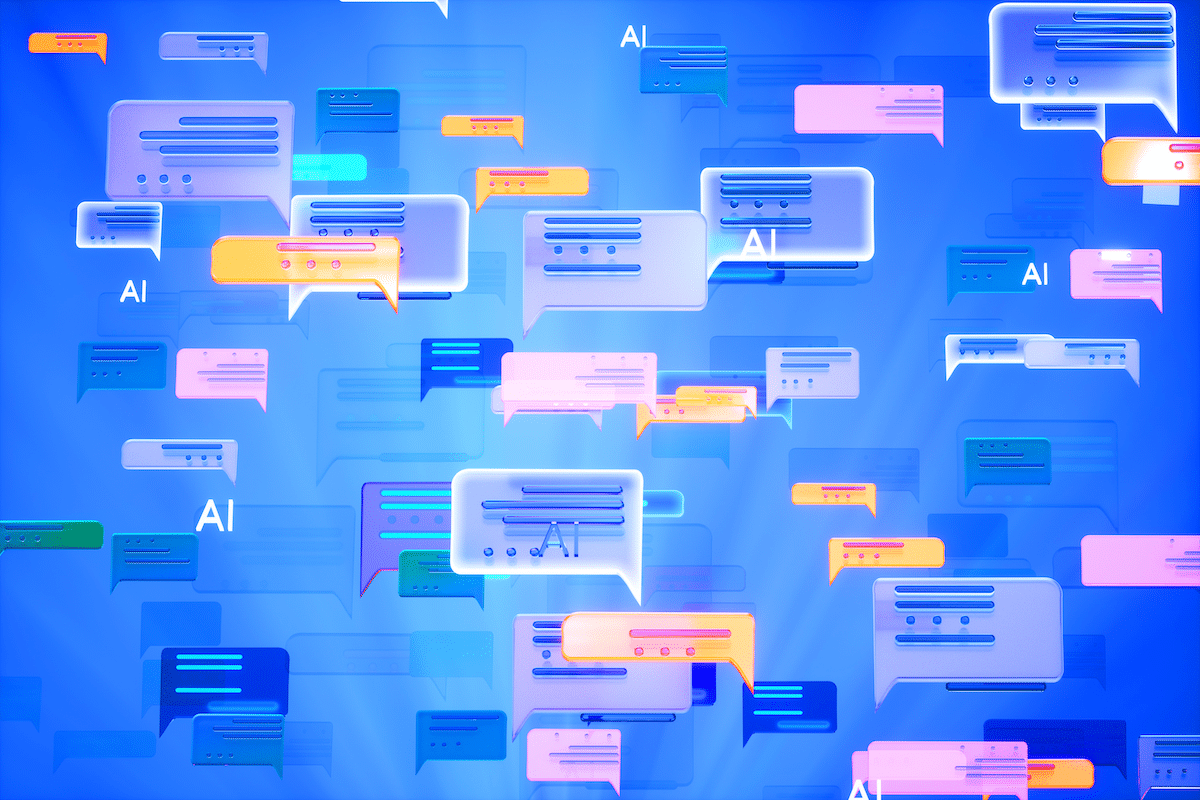Why You Need GPU Provisioning for GenAI
Guy Lecker | March 14, 2024
GPU provisioning serves as a cost-effective solution for organizations who need more GPUs for their ML and gen AI operations. By optimizing the use of existing resources, GPU provisioning allows organizations to build and deploy their applications, without waiting for new hardware. In this blog post, we explain how GPU provisioning as a service works, how it can close the GPU shortage gap, when to use GPU provisioning and how it fits with gen AI.
How Companies are Dealing with the GPU Shortage
Organizations need GPUs to be able to process large amounts of data simultaneously, speed up computational tasks and handle specific applications like AI, data visualization and more. This need is likely to grow as the demand for computational power and real-time processing increases across industries. However, growing demand is meeting a lack of supply, and organizations are encountering obstacles when attempting to purchase GPUs, with years-long waitlists.
As a result, companies are hustling their way to GPU access. They’re trying to leverage their industry connections and reach out to anyone who might help them gain access to GPUs. This includes seeking assistance through professional networks, applying for government grants and forming partnerships with cloud providers to secure access to GPUs for AI ventures. Others are more creative, setting up initiatives like renting out GPUs or trying to repurpose other hardware.
The unexpected wide adoption of gen AI has further exacerbated these attempts. Companies across industries are looking to implement LLMs in their operations, which require GPUs for training, model evaluation, testing, monitoring and more.
Training on smaller data sets or with fewer iterations won’t do. Hallucinations, bias and other issues are real, and can impact the company’s brand name and product quality. Just recently, Air Canada was held liable for incorrect information its chatbot had given a passenger. The story is a warning, highlighting the need for model accuracy and performance. In a higher risk scenario, the results could easily be more dire.
Are companies destined to wait for years or strain themselves getting access to basic computing power? Will the industry landscape be shaped by the companies that have the ability to get their hands on GPUs? There must be a better way…
What is GPU Provisioning?
GPU Provisioning is a flexible, scalable and efficient way to access and utilize your existing GPU resources without the need to invest in additional physical hardware. GPU provisioning can automatically scale your existing resources up and down, even to zero, based on your computational needs.
This means that if your application or task requires more GPU power, GPU provisioning can dynamically allocate more of your resources to meet your demand. Conversely, when the demand decreases, it can scale down your resources, ensuring efficient utilization of the GPU pool. As a result, you can make the most of your existing GPUs, achieving more with what you have.
One way GPU provisioning achieves this is enabling distributed processing - using multiple GPUs for the same task. For tasks that require significant computational power, such as deep learning, rendering, or complex simulations, GPU provisioning can allocate multiple GPUs to work in tandem. This significantly reduces the time required to complete tasks, enhancing productivity and enabling more complex computations.
GPU provisioning is an efficient method for GPU resources management since it simplifies the process of managing GPU resources. When performed manually, these tasks can be complex and time-consuming, especially at scale. GPU provisioning platforms leverage automation and orchestration for the allocation, scaling and maintenance of GPU resources. This allows you to focus on their core tasks and applications without worrying about the underlying infrastructure.
How Does GPU Provisioning Work?
MLRun is an open-source AI orchestration framework for building and managing continuous ML, DL and gen AI applications. MLRun automates AI pipelines and accelerates delivery of production data and online applications. This significantly reduces engineering efforts, time to production and computation resources.
MLRun is also a GPU provisioning platform. It orchestrates multiple GPUs for a single task or can allocate GPUs just for a certain task. MLRun does this by packaging and cloning code and libraries to multiple dynamically scheduled containers at run time. These containers share the same data and code, and are configured to support distribution and parallelism tasks. In addition, MLRun can also automate distributed training or inference across multiple GPUs without requiring the user to change the original code!
When to Use GPU Provisioning
GPU provisioning can significantly enhance organizations’ ability to speed up their computational tasks and improve their competitive stance. GPU provisioning is especially recommended for the following use cases:
- In-house Hosting Limitations - When an organization's existing in-house infrastructure cannot meet the computational demands or when the cost of upgrading hardware becomes unreasonable.
- Intensive Computation Requirements - For tasks that require heavy computational power, such as deep learning, 3D rendering and complex simulations.
- Large Model Sizes - For training large and complex models, like in NLP and computer vision.
- Intensive Training and Fine-tuning - When the organization requires iterative training and fine-tuning of models.
- Accelerating Deployment to Production - For organizations looking to quickly move from development to production, gaining a competitive edge in the market.
- Real-time Applications - Applications that require real-time data processing and decision-making, such as autonomous vehicles or financial algorithms.
- Industries that Require High Precision - For industries that require accurate and granular results, like healthcare for medical imaging analysis.
- Cost-effectiveness - For startups, SMEs, researchers and any other entity that needs to minimize costs while maximizing computational capabilities.
- Data Privacy - For industries concerned with cloud service security, like healthcare and finance.
- Gen AI - When model size and complexity require a large number of GPUs.
Why is GPU Provisioning Important for Gen AI?
The growing interest in and rapid adoption of generative AI have again called attention to GPU scarcity. The architectural complexities and computational demands of LLMs models have escalated to unprecedented levels. Due to their colossal size and complicated computations, they require distribution across multiple GPUs to facilitate efficient loading, fine-tuning and inference.
One example of problematic model sizes is the concept of a "device map," a strategic blueprint that assigns different layers of a model's architecture to separate GPUs. The division enables the accommodation of the model across multiple GPUs so you can load a big model on multiple small GPUs (though if the model can fit into one GPU, it will be much faster).
Therefore, GPU provisioning becomes a natural choice for organizations implementing gen AI. GPUs are needed for various phases. These include distributed training, as well as for inference and monitoring, especially in production environments requiring real-time or near-real-time responses.
It’s true that models like Whisper and Mistral-7B can reside within a single GPU. This shows a growing preference for smaller, more efficient models within the industry. While larger models may offer superior capabilities, the operational and financial overheads associated with their deployment may not justify the marginal gains in performance for many applications.
However, most applications will still require distributed inference, at least for the foreseeable future. Applications in production, ranging from NLP processing tools to advanced image generation and analysis software, have diverse GPU requirements based on their operational complexity and throughput demands. For example, a real-time recommendation system for an e-commerce platform may require a fleet of GPUs to process thousands of requests per second, while a batch processing job for sentiment analysis may have more modest requirements.
In both cases, GPU provisioning serves as a force multiplier.
Alternatively, many organizations might opt to use an external service. The choice to not self-host can be beneficial in certain use cases. However, for organizations that prioritize data sovereignty and security, deploying in-house GPU infrastructure offers greater control over data handling and processing. This approach could fit for regulated industries such as healthcare and finance, where data sensitivity is a top priority.
Conclusion
GPU provisioning offers a pragmatic and beneficial solution to the scarcity of GPUs. The ability to dynamically allocate resources based on demand, ensures that organizations can maintain efficiency without the overhead of investing in new hardware. MLRun is an open-source GPU provisioning platform that can help with this capability.
GPU provisioning supports multiple use cases. When it comes to gen AI, GPU provisioning is almost essential. The size and complexity of LLM models means organizations have no choice but to optimize their resources. Otherwise, the costs and complexities will be unreasonable to manage. Luckily, getting started is straightforward.


